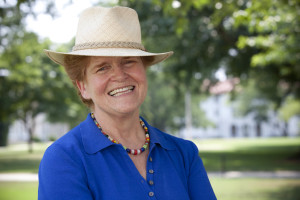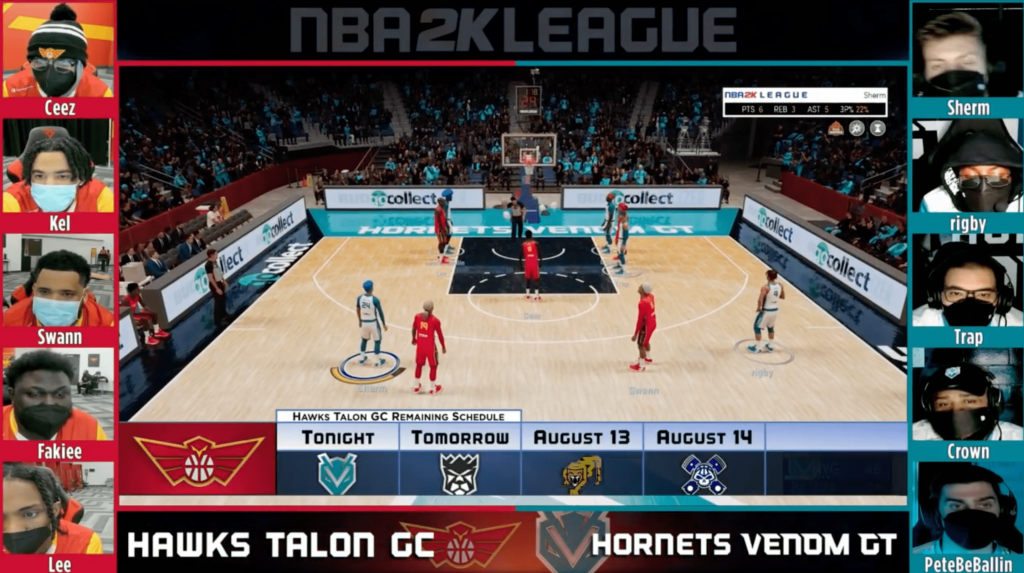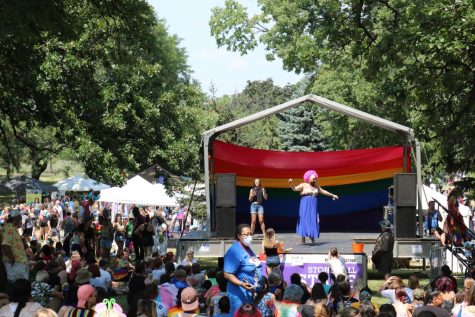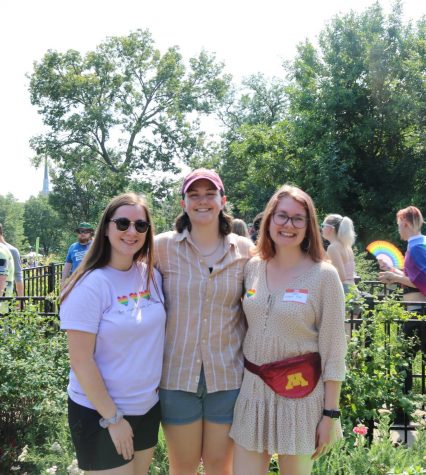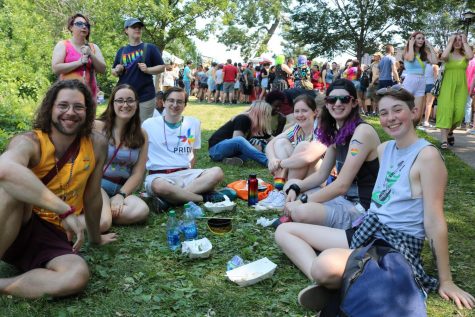Jorge Rojas has led a career spanning many different areas of art — from performance art to art curation, Rojas has done it all.
In 2015, Rojas joined the Utah Museum of Fine Arts, working as its director of learning and engagement. He held this position until March of 2021.
“My job was to oversee education, community engagement and public programming initiatives,” Rojas said. “I think of that job as one of the best jobs I’ve ever had.”
However, his work in art did not begin at the UMFA. Rojas grew up with a respect for art, which he learned from his family.
“I was born into a very artistic family,” Rojas said. “My sisters were all dancers, and [all of my siblings and I] grew up very musical. We [took] piano lessons and we all play at least one other instrument.”
Rojas found his first inspiration in his oldest sister, Lluvia, who would draw the family’s horses.
“[Lluvia] used to draw a lot,” Rojas said. “I just thought, ‘Oh my god, it’s like magic. How can someone recreate something with their hands like that?’”
As a teenager, Rojas performed in a rock band and also became a DJ. However, in an effort to differentiate himself from the rest of his family, he took a step back from music to explore the visual arts.
“I was kind of the black sheep of my family,” Rojas said. “Everybody in my family was a performer, so I decided to go into the visual arts and study traditional [two-dimensional and three-dimensional] art.”
Rojas began experimenting with visual art in high school and continued to study it at the University of Utah and at Bellas Artes in San Miguel de Allende, Mexico.
After graduating from Bellas Artes, Rojas moved to New York City, where he discovered his love for teaching and education.
“I was 25 years old, and my dream was always to go to New York,” Rojas said. “I moved to New York, and quickly realized how expensive it is there.”
After working at various restaurants, he realized he wanted to change paths.
“I finally decided that I just couldn’t handle working in restaurants anymore, and decided to apply for a job as a teaching artist for the Brooklyn Arts Council,” Rojas said. “I really started teaching to make ends meet, [but] I quickly fell in love with it.”
With the Brooklyn Arts Council, Rojas was teaching K-12 students about public art and murals. He found his teaching work to be very fulfilling and felt that he was making an impact.
“I believe that art helps us to find our voice,” Rojas said. “It was really about having a dialogue with these young people about what are some issues that they saw. Was it violence, was it inequity, was it racism?”
Rojas helped his students channel these issues in their drawings and murals to showcase at their schools.
Due to a mix of financial, familial and career-related reasons, Rojas found himself back in Utah after years of living in New York City.
“My wife got a job here in Utah, I have family here [and] I have community here,” Rojas said. “[It] just made sense to come back here.”
For the first three years back in Utah, Rojas was a stay-at-home father. Then, in 2013, he began working as an art history teacher at East High School.
During this time, beginning in 2012, Rojas was the artist-in-residence at the Huntsman Cancer Institute, where he taught art to cancer patients and their families.
From 2012-2015, Rojas curated many local and national art exhibits. He credits this time in his life as what qualified him to work at the UMFA.
UMFA Deputy Director Sonja Lunde remembers working with Rojas.
“[Rojas helped] move the museum into a much more two-directional kind of engaged interaction and learning with our visitors, partners and members,” Lunde said. “Historically, art museums have adopted a much more academic approach to their education departments. Jorge’s approach was to flip that.”
According to Lunde, Rojas’ mindset was that everyone has knowledge of art and everyone has something they can share — he included and invited more voices into the museum.
“He’s just a wonderful person,” Lunde said. “He’s the kind of person that inspires others to do their best work. He’s a visionary.”
During his work at the UMFA, Rojas brought many different partners to the museum, one being Artes de México en Utah, a nonprofit organization based in Salt Lake City.
Their work focuses on art education and displaying art exhibits related to Mexican culture. They have been working with the UMFA since 2009.
Currently, Artes de México en Utah is working with the UMFA on an art series titled Mexican Art and History, a series of presentations meant to educate and begin conversations on a variety of topics related to Mexican art and history.
The first presentation, “Chocolate: From Mesoamerica to Utah,” was presented on Zoom on July 13. This presentation focused on the Maya civilization’s relationship to cacao beans.
Fanny Blauer, director of Artes de México en Utah, values the nonprofit’s work with the UMFA and their connection through Rojas.
“We heavily started working with the museum because of Rojas,” Blauer said. “It was Rojas who said, ‘We need your voice,’ and who introduced us to the museum in 2009.”
Currently, Rojas is the artist-in-residence at the Kimball Art Center in Park City, Utah.
Rojas is currently working on various projects around the state of Utah, and is very excited about the work he is doing. He is curating, working with many different communities and staying true to his love for education by sharing his art with the public.
For more information on Mexican Art and History, visit the UMFA or Artes de México en Utah websites.
d.oldroyd@dailyutahchronicle.com
window[‘bsa_content_preview_only_’] = true;
The post Finding His Voice Through Art: Jorge Rojas’ Journey to the UMFA and Beyond appeared first on The Daily Utah Chronicle.

